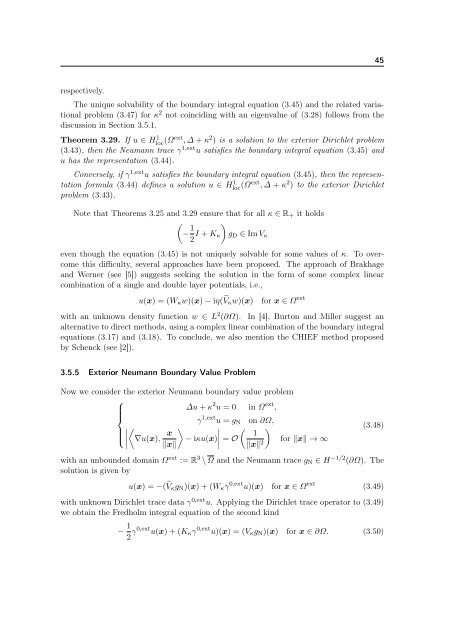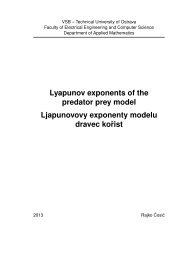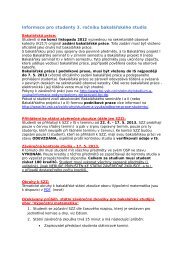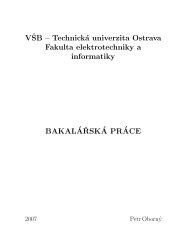The Boundary Element Method for the Helmholtz Equation ... - FEI VÅ B
The Boundary Element Method for the Helmholtz Equation ... - FEI VÅ B
The Boundary Element Method for the Helmholtz Equation ... - FEI VÅ B
You also want an ePaper? Increase the reach of your titles
YUMPU automatically turns print PDFs into web optimized ePapers that Google loves.
45respectively.<strong>The</strong> unique solvability of <strong>the</strong> boundary integral equation (3.45) and <strong>the</strong> related variationalproblem (3.47) <strong>for</strong> κ 2 not coinciding with an eigenvalue of (3.28) follows from <strong>the</strong>discussion in Section 3.5.1.<strong>The</strong>orem 3.29. If u ∈ H 1 loc (Ωext , ∆ + κ 2 ) is a solution to <strong>the</strong> exterior Dirichlet problem(3.43), <strong>the</strong>n <strong>the</strong> Neumann trace γ 1,ext u satisfies <strong>the</strong> boundary integral equation (3.45) andu has <strong>the</strong> representation (3.44).Conversely, if γ 1,ext u satisfies <strong>the</strong> boundary integral equation (3.45), <strong>the</strong>n <strong>the</strong> representation<strong>for</strong>mula (3.44) defines a solution u ∈ H 1 loc (Ωext , ∆ + κ 2 ) to <strong>the</strong> exterior Dirichletproblem (3.43).Note that <strong>The</strong>orems 3.25 and 3.29 ensure that <strong>for</strong> all κ ∈ R + it holds− 1 2 I + K κ g D ∈ Im V κeven though <strong>the</strong> equation (3.45) is not uniquely solvable <strong>for</strong> some values of κ. To overcomethis difficulty, several approaches have been proposed. <strong>The</strong> approach of Brakhageand Werner (see [5]) suggests seeking <strong>the</strong> solution in <strong>the</strong> <strong>for</strong>m of some complex linearcombination of a single and double layer potentials, i.e.,u(x) = (W κ w)(x) − iη( V κ w)(x)<strong>for</strong> x ∈ Ω extwith an unknown density function w ∈ L 2 (∂Ω). In [4], Burton and Miller suggest analternative to direct methods, using a complex linear combination of <strong>the</strong> boundary integralequations (3.17) and (3.18). To conclude, we also mention <strong>the</strong> CHIEF method proposedby Schenck (see [2]).3.5.5 Exterior Neumann <strong>Boundary</strong> Value ProblemNow we consider <strong>the</strong> exterior Neumann boundary value problem⎧∆u + κ 2 u = 0 in Ω ext ,⎪⎨γ 1,ext u = g N on ∂Ω, ⎪⎩x ∇u(x), − iκu(x)1∥x∥ = O ∥x∥ 2 <strong>for</strong> ∥x∥ → ∞(3.48)with an unbounded domain Ω ext := R 3 \ Ω and <strong>the</strong> Neumann trace g N ∈ H −1/2 (∂Ω). <strong>The</strong>solution is given byu(x) = −( V κ g N )(x) + (W κ γ 0,ext u)(x) <strong>for</strong> x ∈ Ω ext (3.49)with unknown Dirichlet trace data γ 0,ext u. Applying <strong>the</strong> Dirichlet trace operator to (3.49)we obtain <strong>the</strong> Fredholm integral equation of <strong>the</strong> second kind− 1 2 γ0,ext u(x) + (K κ γ 0,ext u)(x) = (V κ g N )(x) <strong>for</strong> x ∈ ∂Ω. (3.50)









